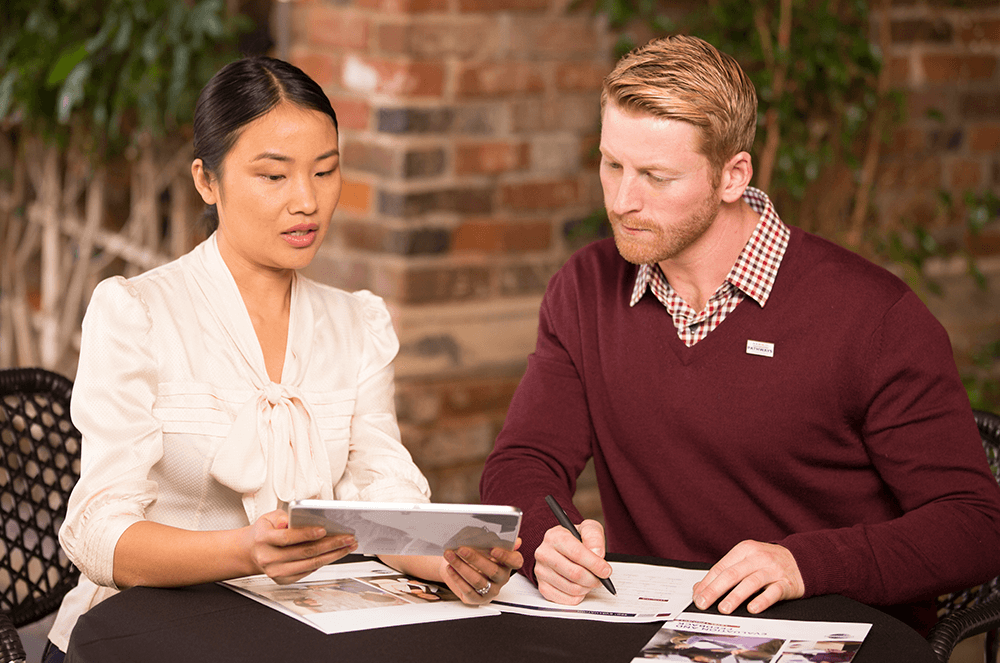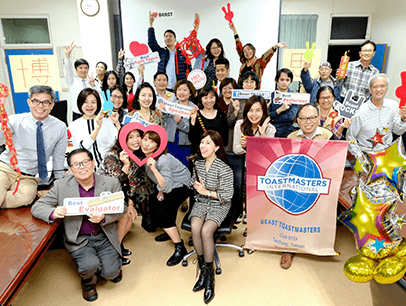Whether you competed in a hotly contested club election or volunteered for your role (or maybe were “voluntold”), you are now a club officer, ready to lead and serve your club members—in person, online, or in a hybrid club.
Read ahead for a round-up of advice from past club officers, inspiration, and strategies to help you along your leadership journey this program year.
Your Success Cycle: Learn. Plan. Execute. Repeat.
LEARN
“Learning and innovation go hand in hand. The arrogance of success is to think that what you did yesterday will be sufficient for tomorrow.” –William Pollard, American physicist
Meet with your predecessor. Find out how the outgoing club officer handled the position, and learn best practices, ongoing issues, projects, and resources. Are there documents or passwords that you need? Ideally, the outgoing officer will mentor you in your new role.
Attend Club Officer Training. Even if you have done the role before, you may learn something new. You can also share your experience and network with other Toastmasters, who may give you additional insights.
“Take a breath and remember that this is a learning and leadership opportunity. You do not have to be perfect. You do not have to do every task yourself.”
—Carolyn Curley, DTM, North Pole, Alaska, Fairbanks North Star Borough ClubRead the Club Leadership Handbook. Read the entire handbook so you can understand how a club should operate, the roles (including your role), the timelines, and the resources available.
Learn how to navigate Club Central and your own club’s website.
PLAN
“Our goals can only be reached through a vehicle of a plan, in which we must fervently believe, and upon which we must vigorously act. There is no other route to success.” —Pablo Picasso, Spanish painter

Attend your club’s Executive Committee meetings (club officer meetings). Make sure everyone knows what is expected, figure out the Distinguished Club Plan (DCP) for the year, and review and consider revising the processes of the club, from how meetings are conducted, to guest processes, to new member orientation, to recognition, and more.
Put important dates on your calendar and set up task reminders. These might include club meeting dates, club officer training, deadlines, and/or recurring tasks. (Some examples: The Vice President Education [VPE] might create a recurring task to contact the meeting Toastmaster a week prior to the meeting. The Vice President Public Relations [VPPR] might create a recurring task to promote the meeting on social media a few days prior to the meeting.)
Set goals. Not only can your club have goals, but you also can have goals for your role, too. But be careful about setting too many goals, because it’s easy to lose focus and a motivation to act if you have too many goals.
EXECUTE
“Have a bias toward action—let’s see something happen now. You can break that big plan into small steps and take the first step right away.” —Indira Gandhi, former Prime Minister of India
Be willing to experiment. Toastmasters is a safe place to fail, whether it be in speaking or in leading.
“You can do a fair amount of experimenting, as long as you don’t destroy friendships in the process. You can experiment with the website, the agenda, or allowing members to try new things. Experiment, learn, and improve.” —Dennis Olsen, Minnetonka, Minnesota, Tri-Dynamics Club
Apply the 4 Ds: Do it, Defer it, Delegate it, Delete it
You only have so much time in a day, so how do you manage your time wisely? Consistently focus on important and urgent tasks. Try the 4 Ds method, a productivity strategy in which you separate your actions based on urgency and importance. This strategy was famously used by Dwight Eisenhower, the 34th president of the United States, and popularized by others including authors Stephen Covey and Jack Canfield.
- Do it: Urgent and important (tasks you will do immediately).
- Defer it: Important, but not urgent (tasks you will schedule to do later).
- Delegate it: Urgent, but not important (tasks you will delegate to someone else).
- Delete it: Neither urgent nor important (tasks that you will eliminate).
Additional Tips for Each Officer
“Underpromise. Overdeliver. Create a safe space. Clubs are the heart of Toastmasters.”
—Andy Hammond, DTM, Littlehampton, England, Arun Speakers
President
“Having regular Executive Committee meetings where we evaluate our performance against the Club Success Plan helps us stay on top of things.”
—Ruchira Singh, Kolkata, West Bengal, India, TCS, Maitree Kolkata Toastmasters Club
Schedule regular Executive Committee meetings (at least once a month) and follow an agenda (see the Club Leadership Handbook for an example agenda).
Recognize member achievements at club meetings. People appreciate being recognized, and guests are encouraged by a positive atmosphere.
“Be excited and happy to be at the meetings. If the officers lead by example, the other members and guests catch that contagious excitement. When club meetings are something people look forward to, the club thrives!”
—Mike Giardina, DTM, Chandler, Arizona, Valued VoicesWhile members often pride themselves in their abilities to be flexible and improvise, you should still prepare, plan, and adjust early. Arrive at meetings before everyone else, review the agenda, work with others to fill in roles, get guest information (especially name pronunciation) to introduce guests, and plan out any business portion of the meeting.
Build relationships outside of the meetings. This could even be right before or after meetings.
“At the end of the meeting, we ask for guest feedback, then close the formal meeting and invite everyone to stay, if they want, for some social time. We catch up on each other’s lives, answer questions about Toastmasters that our guests ask, and generally just talk. Even though we are online and most haven’t ever met in person, it does feel like a brick-and-mortar club going out for food and drinks after a meeting.”
—Michelle Rich, DTM, Clarington, Ontario, Canada, Great White North Online

Vice President Education
“Be the change you want to see. I’ve scheduled myself as the meeting Toastmaster two weeks in a row to model some changes.”
—Lucas Roberts, River Falls, Wisconsin, Ordway Orators Club
It’s not a meeting. It’s an event. You are the event planner for your club. Treat every meeting like an open house, making sure roles are filled in advance and members are educated in fulfilling their roles (the Vice President Membership [VPM] can also help with orienting new members to the meeting roles). Help the Toastmaster of the Day put on a good show.
Speech contests are also an event. Schedule them early and have a rehearsal “script talk-through” with the contest Toastmaster and chief judge.
Ask members what educational goals they have and then strategically schedule the goals so that members can meet
them. Communicate any goal achievements to the Club President for announcement at meetings.
Vice President Membership
“A good cadence is as follows: Assign a guest guide for each meeting (to walk the guest through the meeting, sitting next to the guest if an in-person meeting), personally follow up with guests within 48 hours, and once a guest has expressed a desire to join, set up a phone call or Zoom meeting to walk the guest through completing the membership application.”
—Keith Hardy, St. Paul, Minnesota, St. Paul Speakers Toastmasters Club
Implement a process for converting guests to members. If you only have one or two guests at a meeting you can work with them yourself (in an online meeting, you can use the chat feature, or even a breakout room). Have other members trained in your process too.
Work with the VPE and VPPR to create and promote membership-building meetings at least once a quarter. These meetings are also an ideal time to reach out to former members and previous guests and invite them to visit again.
Vice President Public Relations
Keep your club website up to date (or work with your website administrator to do so). Plan on updating the website at least once a month. Add pictures of your smiling members and consider adding video testimonials.
Don’t overwhelm yourself with trying to use every social media channel, especially if they aren’t already established for your club. Pick one or two to start, such as Facebook and LinkedIn.
Ask guests how they heard about your club. Spend more time on promotional efforts that yield results.
Secretary
Update the club’s officer list immediately after elections and confirm submission to World Headquarters. Communications from Toastmasters International and the District need to go to the right officers.
Type minutes during the meeting and send/post them immediately after the meeting. The most critical items to note are decisions and action items.
Treasurer
Collect dues early and make it easy for members to pay. Many Club Treasurers send a link (and have the link on the club website) to an online payment processor, such as PayPal.
Sergeant at Arms
Arrive early (both in person and online) to prepare the meeting space (host or co-host online meetings) and admit/greet members and guests.
Immediate Past President
Mentor and help the President be successful.
Chair the Club Leadership Committee to seek out and nominate club officer candidates.
Attitude Makes the Difference
You can see challenges, or you can see opportunities for growth. Accept that there will be mistakes and lessons learned. Show compassion and empathy toward members and fellow officers, as they probably are more stressed due to the pandemic. And remember that fundamentals still matter.
A final note: Don’t let technology get in the way of delivering value and a quality experience to the members and guests of your club. The member experience is largely created by the club officer team, by each officer’s dedication to learn their role, plan together as a team, execute effectively, and then learn and adjust along the way.
Diane Windingland, DTM is a presentation coach from Spring, Texas, and a member of three clubs: Frankly Speaking Toastmasters in Spring, Texas, and PowerTalk Toastmasters and Readership Toastmasters, both in Minnesota. Learn more at virtualspeechcoach.com.




 What Not to Do
What Not to Do


